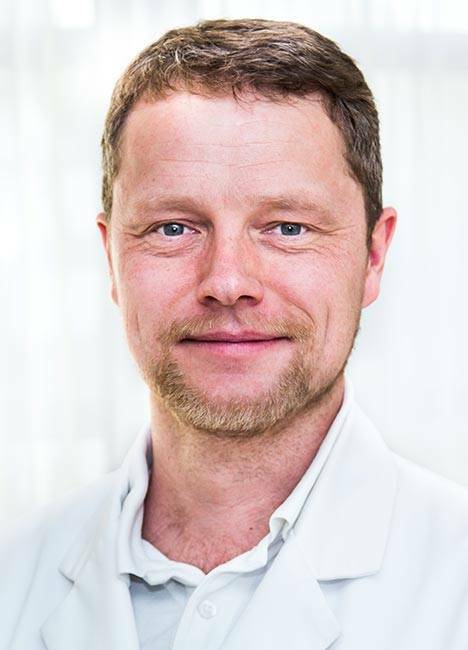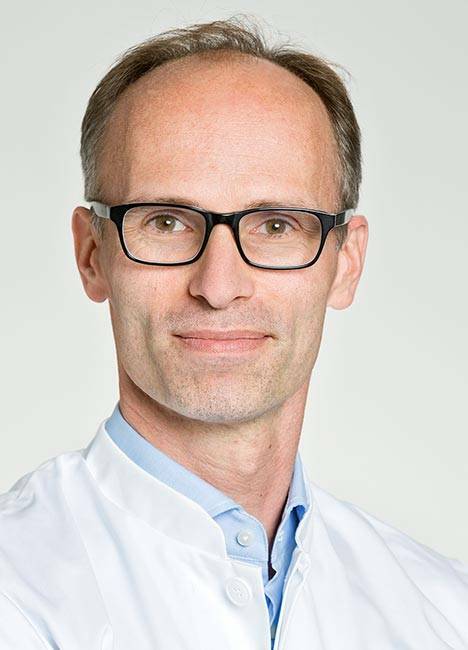Arthroscopic repair of the rotator cuff in the shoulder
Fact Sheet: Arthroscopic Shoulder Surgery / Rotator Cuff Repair
- Inpatient treatment: 3 days
- Outpatient treatment: 28 days followed by 14 days ouptpatient rehabilitation
- Earliest flight home: 7 days after Surgery
- Recommended flight home: 10 days after surgery
- Time before showering: 7 days after surgery
- Recommended time off work: 2-6 weeks (depending on profession)
- Time before suture removal: 5 days
- Time before driving a car: 6 weeks
What is the Rotator Cuff?
 Arthroscopic Rotator Cuff Repair ©Viewmedica
Arthroscopic Rotator Cuff Repair ©Viewmedica
The rotator cuff is made up of the tendons of four muscles. It surrounds the head of the humerus just as cuff surrounds the wrist at the end of a sleeve. One part of these muscle attachments is located below the top of the shoulder. These tendons lie between two opposite, movable bones and are therefore easily damaged. The tendons keep the head of the humerus within the joint and provide stability when the arm is moved.
Common Injuries of the Rotator Cuff
If the head of the humerus comes out of place (through trauma), or if the space within the shoulder joint is reduced, this will lead to shoulder pains and arm mobility problems such as inflammation of the bursa (bursitis), tendon irritations (tendonitis) or premature wear of the tendon.
Reasons for Damage to the Rotator Cuff of the Shoulder
Sometimes the tendon tears after a fall or strenuous physical work. However normally the tendon has to have suffered a previous degeneration or damage as a healthy tendon will seldom tear only as a result of an accident. If the tendon is torn, it is impossible for it to mend by itself.
If there is a tear in the rotator cuff, the tear will become larger and larger until the tendon disintegrates completely, the muscle degenerates (muscle fibres are changed into fat) and the shoulder joint is no longer able to function. At this stage, it is too late to repair the rotator cuff by tenosuture.
For the best long-term results, tenosuture is required as soon as possible after tendon injury.
Early Expert Diagnose of Rotator Cuff Disorders is Required
Without the function of the tendon, the head of the humerus (the main bone of the upper arm) is easily displaced.
Every movement causes friction, with bone rubbing against bone. This leads very rapidly to an attrition (wearing away) of the glenohumeral (shoulder joint).
This is called defect-arthropathy. Because of the tendon injury, the whole of the joint is damaged.
A tear in the rotator cuff means that the shoulder will never function "normally" again without rotator cuff surgery to repair the tendon injury, this is because the shoulder joint will have lost stability.
Some patients develop techniques to enable them to continue to use their arm, but when this happens, the strength in the arm will only decrease further.
Shoulder surgery at this stage can not regain or even improve the function of the shoulder. Only a reduction of pain is possible. Following damage by attrition, the shoulder joint can be treated with an endo-prothesis (artificial joint), however, because the gearing (tendon) and the engine (muscle) are missing, the result will not be functionally satisfactory.
If tendon rupture is diagnosed early enough by a specialist orthopaedic surgeon, it is possible to repair the rupture arthroscopically (through small incisions in the skin).
By this method, torn tendons are repaired and reattached. Further joint destruction is prevented, pain is relieved and the lifting function of the arm is regained.
How is Rotator Cuff Repair Surgery Performed?
Rotator cuff repair surgery is normally performed arthroscopically (through small tubes inserted into the shoulder joint). However, if the tear in the tendon is large, open surgery may be needed.
The specialist orthopaedic surgeon makes small incisions (cuts) in the shoulder and inspects the damage to the joint using a small camera. If there are any loose fragments of tendon or other debris from the damaged rotator cuff, the orthopaedic surgeon removes these in a procedure called debridement.
If bone spurs (small pieces of rough bone) have formed on the bottom of the acromion, the orthopaedic surgeon uses a rasp-like tool to smooth the area, this is called subacromial decompression and will stop the acromion from pinching down on the supraspinatus tendon.
Depending on how much damage there is to the shoulder joint, the procedure may end here.
Rotator Cuff Suture
If the surgeon finds that there is a tear in the rotator cuff area, this will be repaired by tendon suture (sewing the tendon back together). If the tear, is small to moderate, it will be performed arthroscopically, it is large the tendon will be repaired by open surgery.
First the tendon is cleaned up. Next an area on the humerus (the large bone at the top of the arm) is prepared and the specialist orthopaedic surgeon drills two small holes in the bone. Anchors (small pegs) are placed in these holes. These pegs are then used to hold the stitches in the correct place on the arm bone.
The tear in the tendon is stitched together (the stitches are pulled tight against the pegs), reattaching the tendon to the humerus.
After the rotator cuff repair surgery, the arm is usually placed in a sling.
A program of physical therapy will be needed to strengthen the shoulder and regain the full range of motion.
Over time the tendon will naturally reattach itself to the humerus bone.





